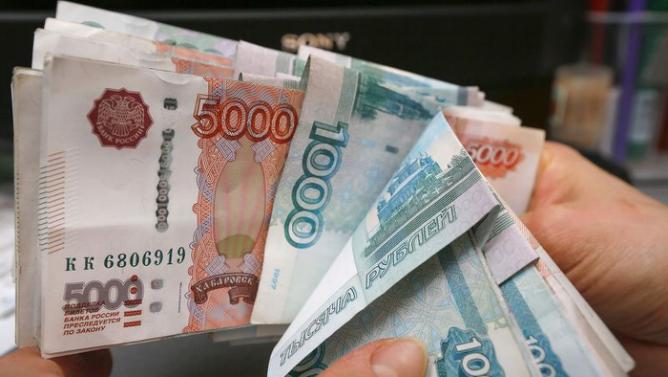Ruble touches seven-month high as Russia sells out bond auctions

By Bloomberg
The ruble rose to the strongest level since November as crude oil advanced and tensions between Russia and the U.S. over the Ukraine conflict eased.
Russia’s currency extended the largest gain in emerging markets this year as the Finance Ministry sold out its 11th consecutive bond auction and Brent crude, the benchmark for the nation’s biggest export, climbed for a second day. U.S. Secretary of State John Kerry and Russian President Vladimir Putin had their first face-to-face meeting in two years on Tuesday.
Demand for Russian debt is returning as the ruble rebounds from the record lows it reached in December and the nation’s companies lowered reliance on the central bank to meet foreign- currency debt payments. While Russia’s support for separatists rebels in Ukraine’s east has pushed relations with the U.S. to a post-Cold War low, yesterday’s meeting had a warmer tone than recent exchanges.
“It’s a good combination of rising oil prices and steady central bank liquidity flows on the back of ongoing political dialog over Ukraine,” Vladimir Osakovskiy, chief economist for Russia at Bank of America Corp. in Moscow, said in e-mailed comments. “This rally is at least partly fundamentally driven by oil prices, which could limit the scope for the central bank’s opposition to an overly strong ruble.”
Climbing oil prices and a cease-fire in Ukraine have made the ruble the best performer globally this year with a 23 percent advance against the dollar. The rally has returned the ruble to its level before the central bank raised interest rates by a surprise 650 basis points in December to arrest the currency’s collapse.
Bond Sale
The rebound has slowed the pace of price growth, which soared to the fastest since 2002 in March, allowing policy makers to lower their benchmark borrowing rate by 450 basis points and fueling appetite for the nation’s bonds.
Five-year government notes declined on Wednesday, sending the yield four basis points higher to 10.97 percent after climbing 13 basis points yesterday. Russian local-currency debt has handed investors a 45 percent return in dollar terms this year, the most among emerging markets tracked by Bloomberg.
The Finance Ministry sold 15 billion rubles of floating- coupon bonds due in January 2020 with the demand more than two times what was offered. It will auction 10 billion rubles of fixed-coupon May 2020 bonds later on Wednesday.
Government officials voiced concern in April about the ruble’s gains, while the central bank raised the cost of dollars it provides at repurchase auctions to curb bets on further currency appreciation. A strong ruble can reduce budget revenue from exports priced in dollars and hurt local companies’ competitiveness.
‘Border Territory’
“Although such levels aren’t very dangerous for Russia’s financials, they’re in the border territory, so new verbal interventions and higher rates on foreign currency loans from the central bank are very possible,” Vladimir Miklashevsky, a strategist at Danske Bank A/S in Helsinki, said in e-mailed comments.
Preferred shares of OAO Surgutneftegas jumped 3.6 percent to 38.84 rubles, the most on the benchmark Micex stock index, which retreated 0.4 percent to 1,698.09. The oil producer said it’s not in talks to acquire a stake in OAO Rosneft.
OAO Novolipetsk Steel, Russia’s largest steelmaker, dropped 0.8 percent to 72.09 rubles after the European Union imposed tariffs as high as 35.9 percent on electrical steel from the U.S., Russia, Japan, China and South Korea, seeking to curb competition for producers in the EU.
Here we are to serve you with news right now. It does not cost much, but worth your attention.
Choose to support open, independent, quality journalism and subscribe on a monthly basis.
By subscribing to our online newspaper, you can have full digital access to all news, analysis, and much more.
You can also follow AzerNEWS on Twitter @AzerNewsAz or Facebook @AzerNewsNewspaper
Thank you!
